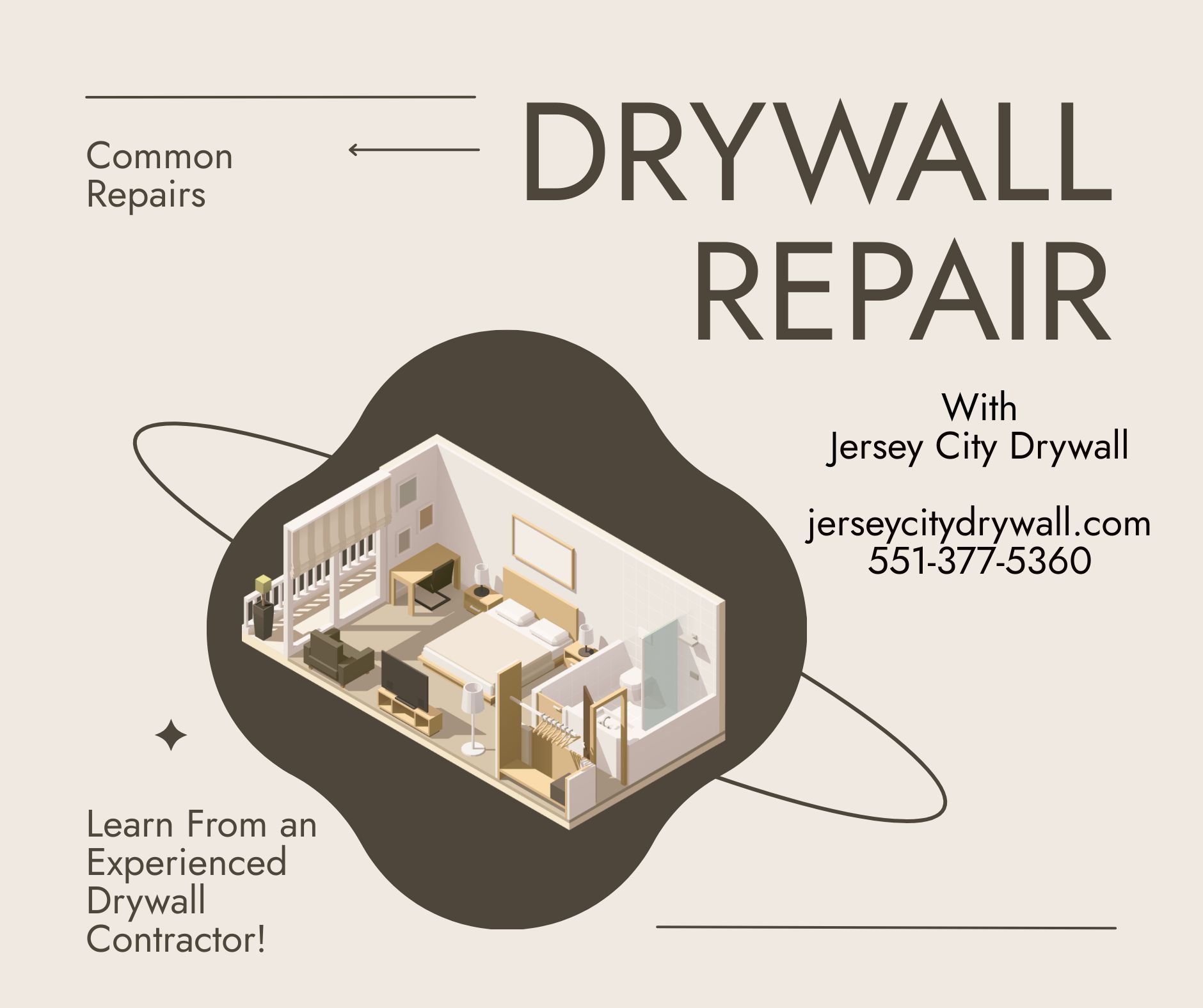The Art of Invisible Drywall Repair: Why Finish and Texture are Everything
When it comes to Sheetrock repair, there's a significant difference between a functional fix and a truly seamless one. Most homeowners aren't just concerned about whether a hole gets covered—they worry if the drywall patch will blend perfectly with the existing wall. Whether you're dealing with cracks in wall surfaces, need to fix a hole in wall, or require comprehensive Sheetrock wall repair, the finishing touches make all the difference.
Many DIY enthusiasts can handle basic patching holes in drywall, but achieving that invisible finish where no one can detect where the wall board repair occurred requires professional skill. This is where hiring a qualified drywall repair contractor becomes invaluable. A skilled professional can make it look like the damage never happened in the first place, preserving both the structural integrity and aesthetic appeal of your home.
Why Finish & Aesthetics Matter in Drywall Repair
The first thing friends, family, or potential buyers notice about your wall patch isn't the structural integrity—it's whether they can see where the repair was done. A sloppy drywall patching job can ruin the look of an entire room, instantly drawing the eye to the imperfection rather than your décor or design elements.
Proper texture matching becomes especially crucial for older homes with specific or dated finishes. Many houses built in the 1970s-1990s have distinctive textures that can be challenging to replicate without specialized techniques and tools. This is why a reputable drywall repair company will invest significant time in matching not just the wall structure, but also the existing texture, paint color, and finish sheen.
Poor drywall crack repair or mismatched textures don't just affect your daily enjoyment of the space—they can significantly impact resale value. Home inspectors and potential buyers often flag obvious patch jobs as signs of potential underlying issues or poor maintenance. When undertaken by professionals, however, even substantial Sheetrock wall repair can remain completely undetectable, preserving your home's value and appearance.
Common Drywall Textures & Matching Challenges
Matching texture is arguably the most difficult aspect of any dry wall patch project. Each texture requires different techniques, tools, and timing to replicate properly. Here's a breakdown of popular drywall textures and what makes each challenging to match.
1. Smooth Finish
Smooth finish walls offer a clean, modern aesthetic that's increasingly popular in contemporary homes. However, they're actually the most difficult surface for drywall hole repair because they leave absolutely nowhere to hide imperfections. Without texture to camouflage slight variations, every bump, seam, or difference in the drywall replacement becomes immediately visible, especially when light hits the wall at an angle.
Professional drywall repair contractors typically need to use extensive skim coating techniques and meticulous sanding to achieve truly invisible repairs on smooth walls. The skill level required is significant, making this seemingly simple texture ironically the most demanding for repair work.
2. Orange Peel
Orange peel texture, named for its resemblance to citrus skin, features a slightly bumpy surface that provides subtle dimension to walls. It's extremely common in homes built since the 1980s and remains popular for new construction.
While orange peel can be relatively easy to apply using spray equipment when finishing a whole room, matching it precisely during a wall patch job requires significant skill. The exact spray consistency, pressure, and distance from the wall all affect the pattern size and density. An experienced Sheetrock repair contractor will often practice on sample boards before applying the texture to your actual repair to ensure an exact match.
3. Knockdown Texture
Knockdown texture starts similarly to orange peel, with material being sprayed onto the wall, but then the peaks are "knocked down" with a drywall knife to create a flattened, mottled pattern. This popular finish requires precise timing—waiting too long or not long enough before knocking down the texture dramatically changes the final appearance.
For drywall patching in knockdown-finished walls, professionals must carefully match not just the spray consistency but also the exact technique and timing of the knockdown pass. Many contractors have developed their own signature knockdown styles, making it especially important to find a drywall repair company with experience matching various knockdown patterns.
4. Popcorn / Acoustic (for ceilings)
Though primarily used on ceilings rather than walls, popcorn texture presents unique challenges for repair. This outdated but still common texture contains small foam or polystyrene beads that create its characteristic bumpy appearance.
When dealing with popcorn ceiling repair as part of a comprehensive Sheetrock repair project, contractors often need specialized equipment or replacement acoustic panels. Many modern popcorn repairs also require careful consideration of potential asbestos in older applications (pre-1980s), making professional assessment crucial before attempting repairs.
5. Slap Brush / Stomp Texture
These highly distinctive textures are created using special brushes or rollers to create repeating patterns. The challenge with these textures is that they were often applied by individual contractors using custom tools or techniques.
Finding an exact match for slap brush or stomp textures can be nearly impossible without using the same tools and methods as the original application. A good drywall repair contractor will sometimes need to recreate tools or develop custom solutions to match these unique textures during the wall board repair process.
It's worth noting that proper drywall patching must take into account not just the texture pattern but also how lighting affects the appearance. Repairs that look perfect under direct light may become obvious under side lighting that casts shadows across the wall surface.
Can the Repair Be Truly Invisible?
The question customers most frequently ask when facing a hole in wall repair is straightforward: "Will anyone be able to tell where the patch is?" The honest answer depends on several factors, primarily the skill of the Sheetrock repair contractor and the thoroughness of the texture and paint matching process.
Key factors that influence the visibility of drywall repair include:
Lighting and shadows: Side lighting from windows or certain types of light fixtures can highlight even minor irregularities in wall surfaces. Professional drywall patching takes into account how light will hit the repaired area.
Size and location of the damage: Larger repairs, especially those in prominent locations, require more careful blending and may benefit from full wall repainting. A small drywall crack repair in a corner might be easier to conceal than a large hole in wall repair in the center of a room.
Paint color and finish: Darker colors and glossier finishes (like semi-gloss or eggshell) show imperfections more readily than lighter colors and flat finishes. Matching not just the color but also the exact sheen is crucial for invisible repairs.
Edge feathering technique: Experienced drywall repair contractors know that properly feathering the edges of the repair area—gradually blending the new material into the existing surface—is essential for invisible results.
For truly seamless results, most professional drywall repair companies recommend repainting the entire wall after the physical repair and texture matching are complete. This eliminates any slight color variations between the patched area and the surrounding wall surface, which can occur even with carefully matched paint due to aging and sun exposure of the original paint.
In some cases, particularly with complex textures or heavily damaged walls, the best approach to fix Sheetrock perfectly might involve repainting multiple walls or even the entire room to ensure complete uniformity.
Tips for Getting the Best Finish from Your Drywall Contractor
To ensure you receive the highest quality finish when hiring a professional for drywall repair, consider the following tips:
Specifically ask about their experience with texture matching and drywall crack repair. A general contractor might handle basic wall patch work, but specialized Sheetrock repair contractors often have more refined techniques for matching complex textures.
Request to see a portfolio of before-and-after photos from previous drywall hole repair jobs, particularly ones with textures similar to yours. Quality contractors should be proud to showcase their detailed work.
Inquire whether they offer complete painting services as part of their repair package. Many drywall repair companies focus solely on the structural repair and texturing, leaving painting to you or requiring a separate painter. Finding a contractor who handles the entire process ensures better continuity.
Look for a drywall repair contractor who offers guarantees on their work. This demonstrates confidence in their ability to provide truly seamless repairs.
Always verify that any Sheetrock wall repair professional is properly licensed and insured, especially for larger jobs. This protects you from liability and ensures they meet professional standards.
Remember that the cheapest bid rarely delivers the highest quality finish. When it comes to achieving invisible repairs, skill and attention to detail matter more than speed or initial cost.
When Replacement is Better Than a Patch
While professional drywall patching can address many issues, certain conditions warrant full drywall replacement rather than attempting to patch the damaged area:
Water damage: When Sheetrock has been saturated with water, it often loses structural integrity and may harbor mold even after drying. A reputable drywall repair company will recommend replacement rather than trying to patch compromised material.
Mold or rot: Any signs of mold, mildew, or rotting within the drywall structure require removal and replacement of the affected sections to prevent health issues and further damage.
Crumbling or sagging Sheetrock walls: When drywall begins to crumble at the edges or sag between studs, these are indications of fundamental structural issues that a simple dry wall patch cannot adequately address.
A trustworthy drywall repair contractor will honestly assess whether your situation requires a patch or complete panel replacement. While it might seem more economical to patch extensively damaged areas, in these scenarios, proper drywall replacement provides better long-term results and safety.
For significant damage, working with a specialized drywall repair contractor rather than attempting DIY fixes ensures that all underlying issues are properly addressed before the cosmetic repair begins.
Conclusion
Great drywall repair transcends simple hole filling to become a true art form where the final goal is invisibility. Texture matching and finishing techniques make the critical difference between a repair that disappears and one that remains an eyesore.
By choosing a skilled drywall repair company that specializes in matching textures and finishes, you ensure your walls will look brand new rather than patched. Whether dealing with minor cracks in wall surfaces, significant hole in wall repair, or extensive projects to fix Sheetrock throughout your home, selecting professionals who understand both the structural and aesthetic aspects of the job will yield superior results.
Remember that when it comes to Sheetrock wall repair, the finish isn't just a final step—it's everything. The right contractor makes damage disappear, leaving nothing but perfect walls behind.
You might also like



